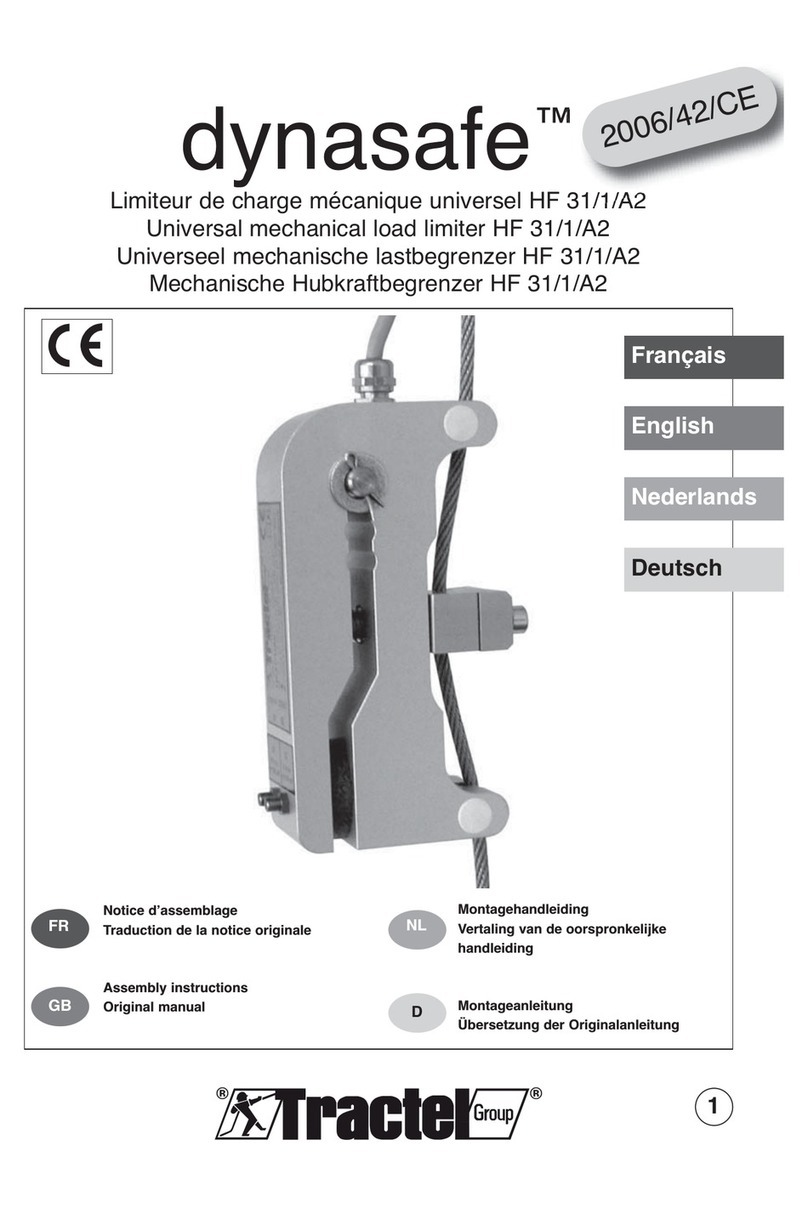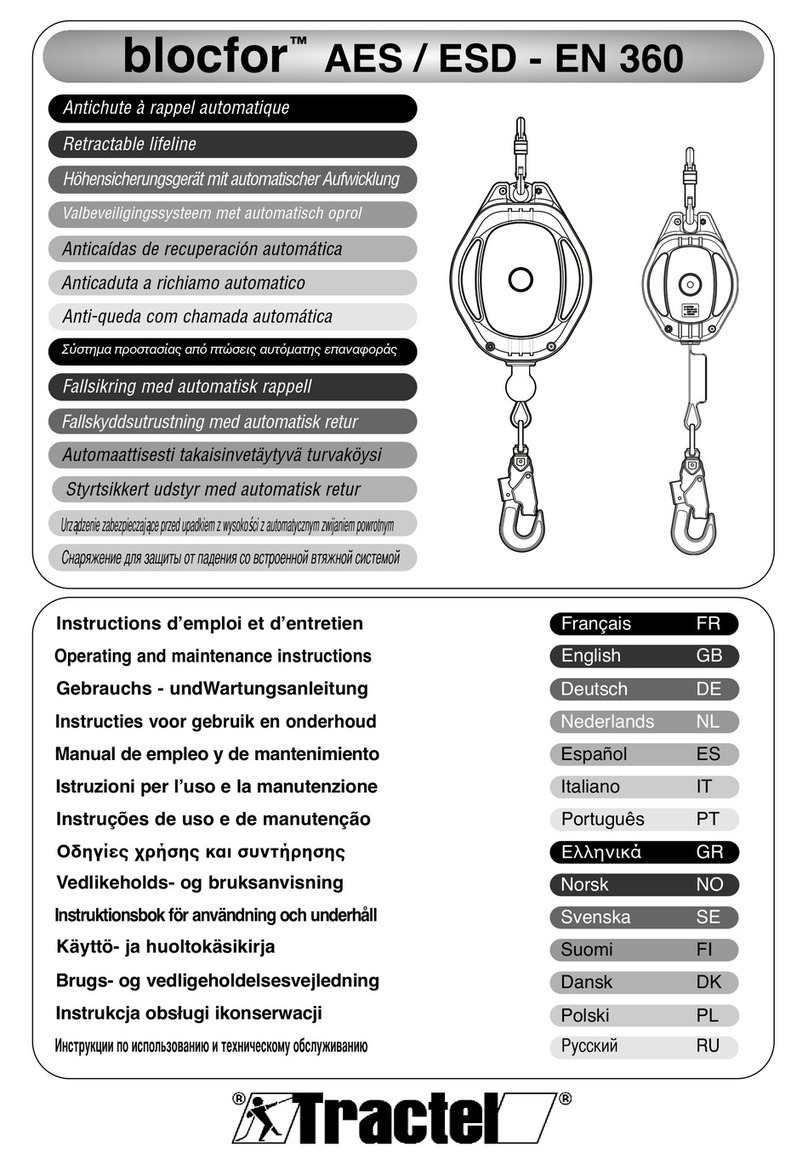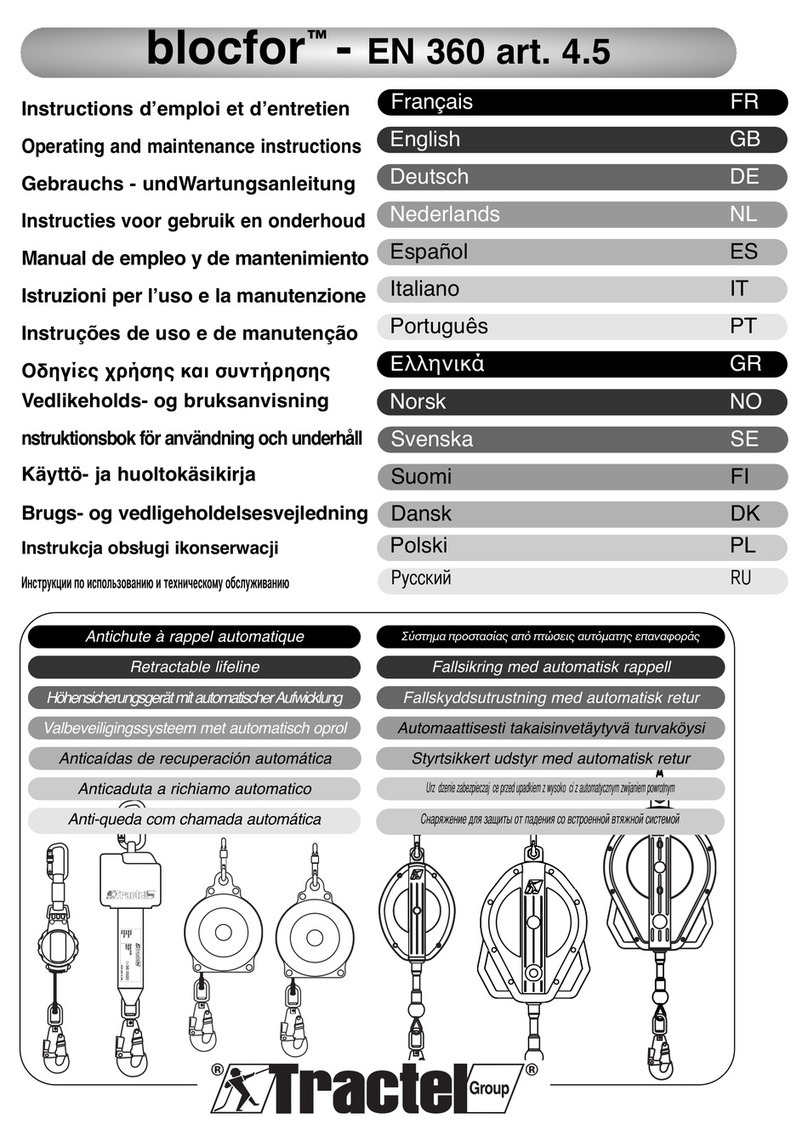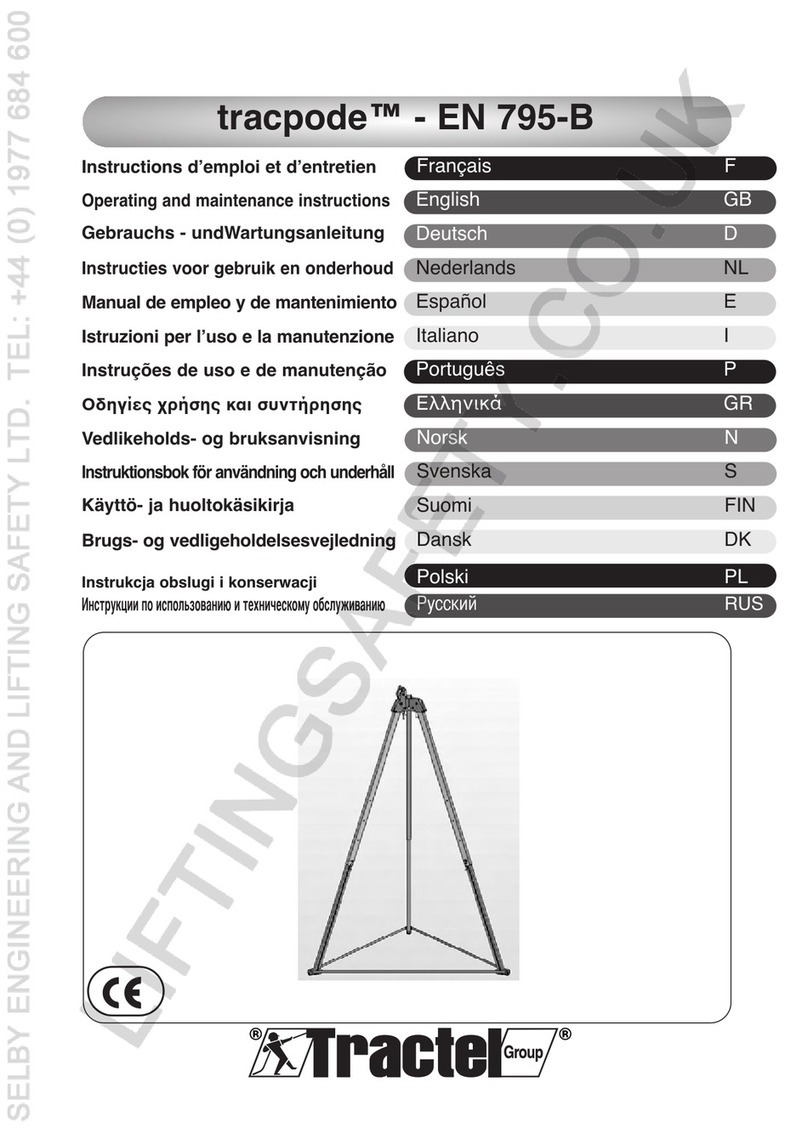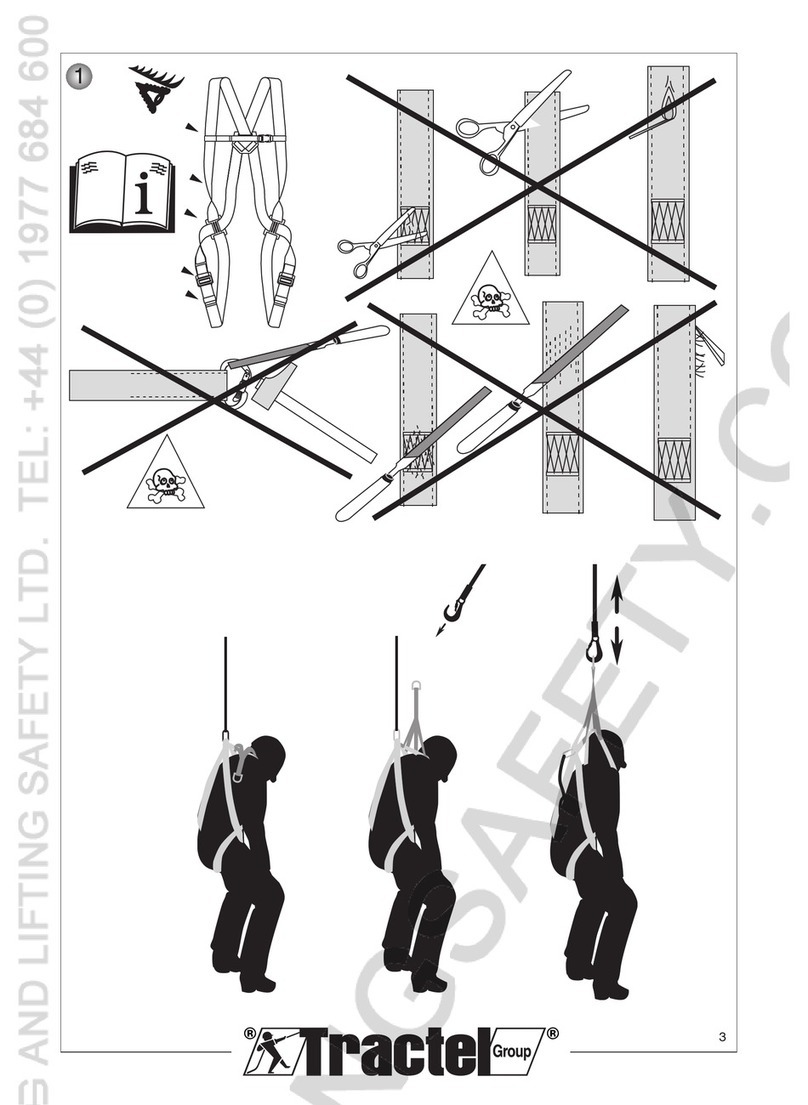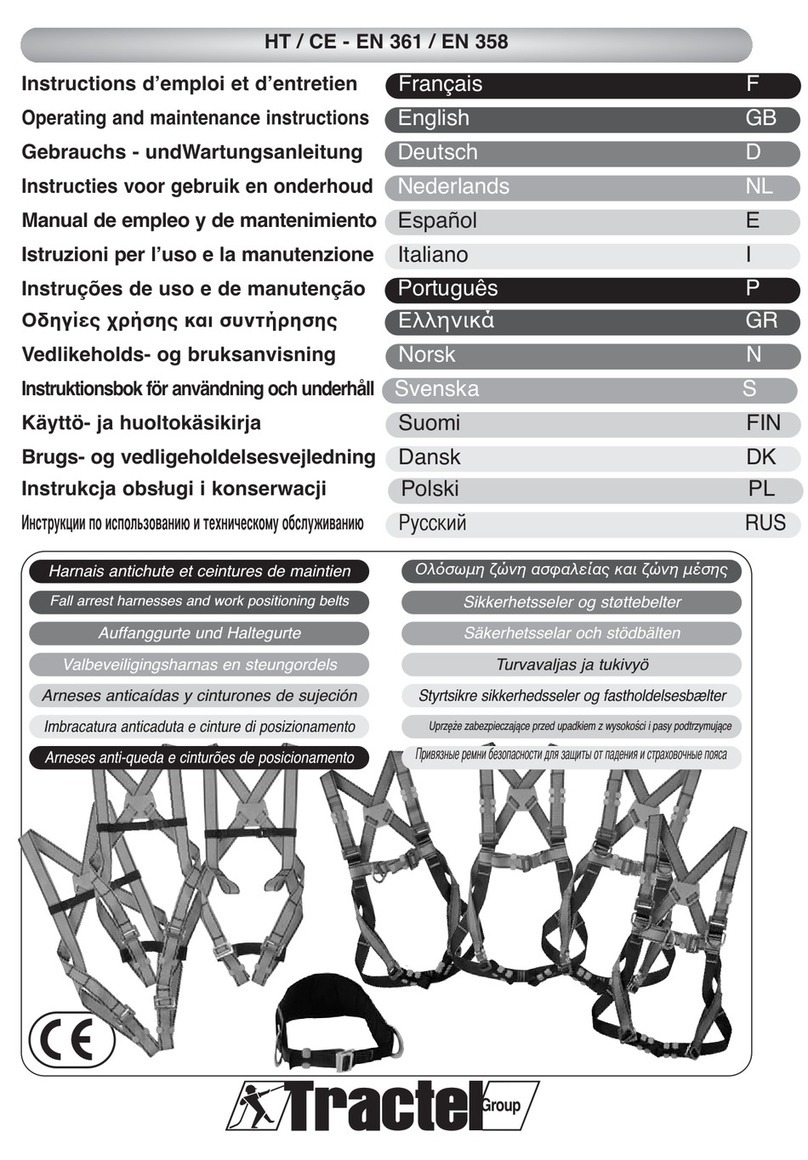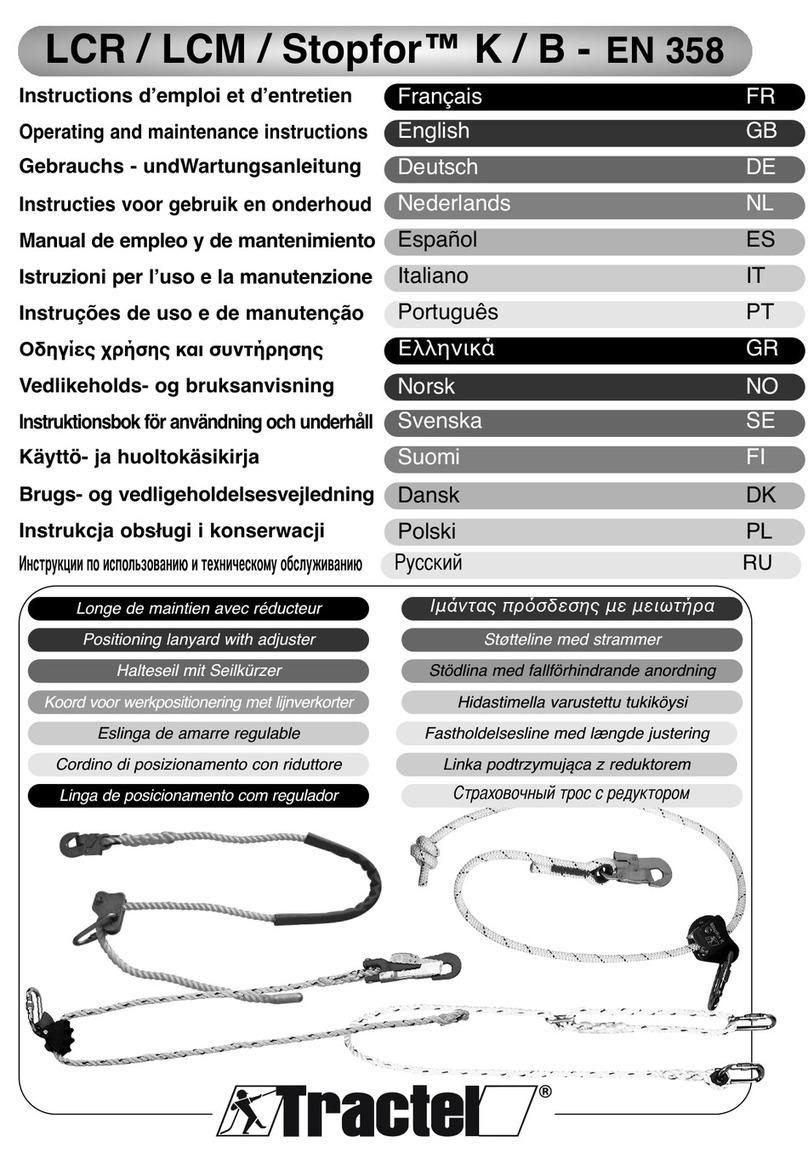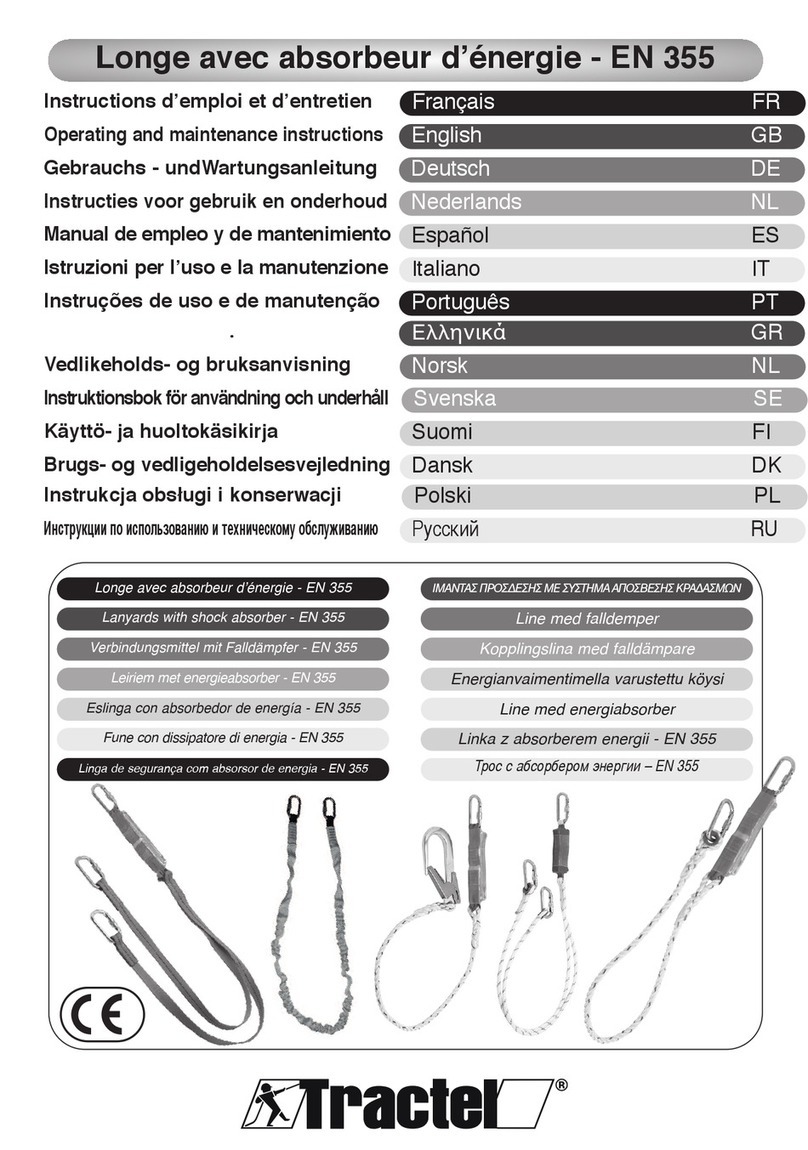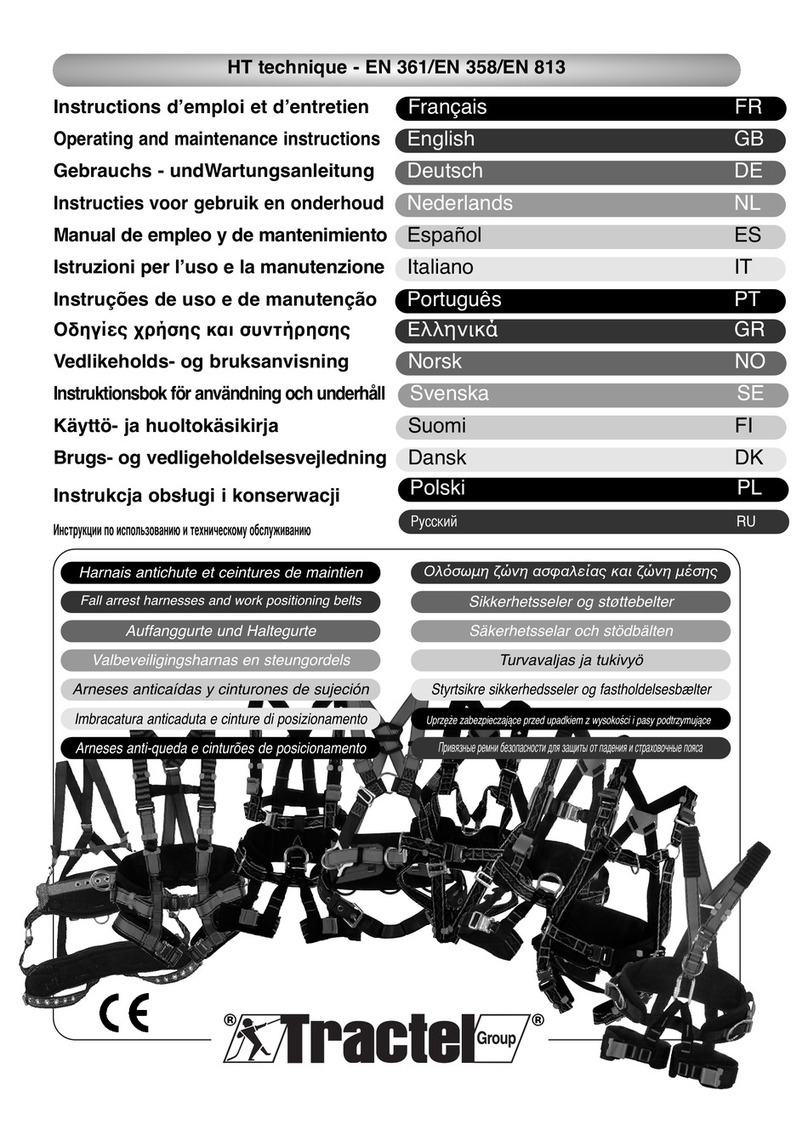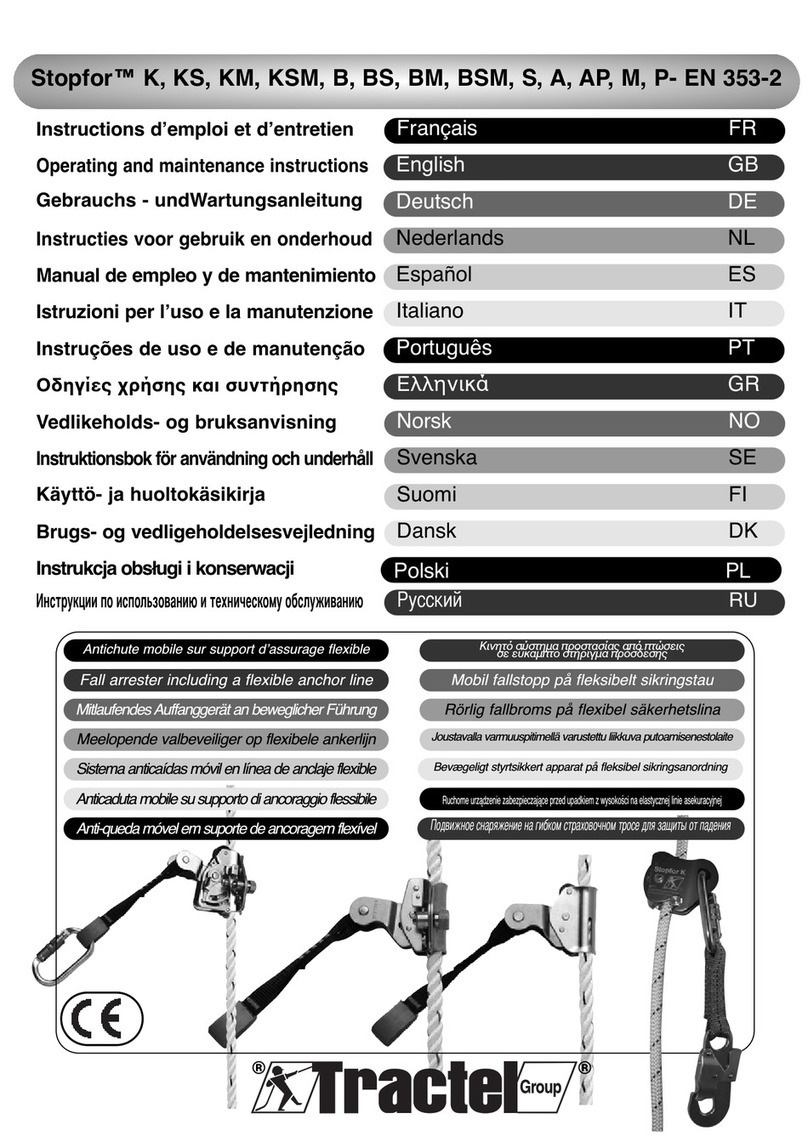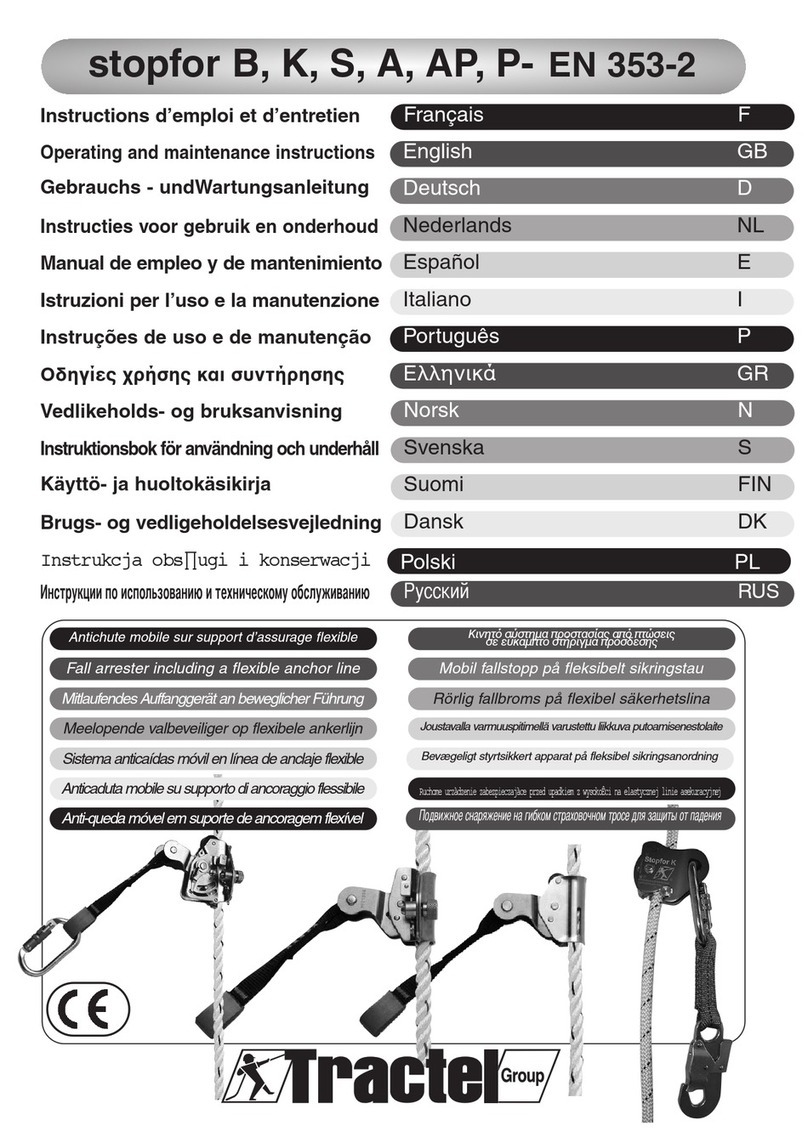The load is transferred to the operating levers
(forward or reverse) via a removable telescopic
operating handle.
The equipment is fitted with an anchoring
device ie a hook or pin, depending on the
model, for quick attachment to the anchorage
point on the stirrup of the temporary
suspended platform, which must be sufficiently
strong.
The tirfor®hoist complies with standard EN
1808 (08/99) and the amendment of the
machinery directive concerning the lifting of per-
sonnel.
1.2.
blocstop™
safety device
The blocstop™ safety device, for temporary
suspended platforms, is a safety device special-
ly designed for lightweight suspended platforms
fitted with two manual hoists.
The blocstop™ safety device complies with
standard EN 1808 (08/99) and the amendment
of the machinery directive concerning the lifting
of personnel.
To provide a coherent protection system which
prevents the platform from falling, the
blocstop™ safety device is fitted on the secon-
dary rope, which is identical to, but
separate from, the suspension rope.
The secondary rope does not take the load
during normal operation. If the suspension rope
breaks, the hoist fails or there is a significant
incline, the blocstop™ and the secondary rope
support the platform on the side where the fault
has occurred.
The equipment delivered as standard consists
of the hoist with its telescopic handle, a blocs-
top™ safety device and two 20 metre equipped
wire ropes, fitted with safety hooks and wound
on two reelers (any other length of wire ropes
can be ordered).
This manual is enclosed with every device,
together with the CE declaration of incorporation.
IMPORTANT : The wire ropes for tirfor®TUxP
devices are specially designed to be used
with tirfor®personnel lifting devices and
blocstop™, in accordance with the special
design of this equipment. These
wire ropes consist of five or six strands and
are different from four-strand wire ropes
which must only be used for lifting equip-
ment. TRACTEL SAS cannot guarantee the
operational safety of tirfor®and
blocstop™ devices used with wire ropes
other than the recommended tirfor®wire
ropes. The suspension rope and the
secondary rope must be identical.
2. ASSEMBLY LAYOUTS:
2.1.
tirfor®
hoist:
For use on an ALTA L or TANGOR platform, the
two TU6P hoists are attached to the end
stirrups (see the manuals for the ALTA L and
TANGOR platforms) using a fastener bolted on
the lower bar of the stirrup.
For use on special platforms, the tirfor®TU6P,
TU12P and TU24P hoists must be hooked onto
a special support on the personnel lifting
device. This support must be strong enough to
comply with the working coefficient value
recommended in the applicable standards, and
at least 4. In Europe, a special platform must be
subject to an CE type-approval by a notified
body.
N. B.: Whatever the assembly layout, if the devi-
ce is anchored directly to a fixed point, it must
be possible for it to be aligned with the direction
of the load or effort with no restriction. To ensu-
re anti-tilt protection, the assembly
instructions for the blocstop™ BSA 15 301,
BSA 20 301 and BSA 35 30 device must be
followed.
2.2.
blocstop™
safety device:
The platform is fitted with two manual hoists,
and with a maximum length of 12, 15 or 18
metres, depending on the platform and the stir-
rups used (see the ALTA L, S or TANGOR
"temporary suspended platform" operating
manual).
5
